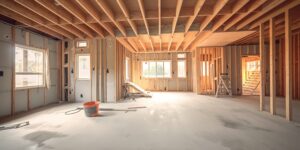 The number stands at a whopping 2.5 million. That is the current shortage of houses in the U.S. market. Research shows contractors must build 1.7 to 2 million homes per year for the next several years just to fix the current imbalance. To say the market is “hot” is an understatement. And in the words of Bachman-Turner Overdrive, “You ain’t seen nothing yet.” The current building boom is a product of Millennials reaching typical homebuying age. Yet the numbers show most of them still are not buying. That means the current market has a long tail and builders should look ahead to what will attract Millennial homebuyers in the years to come.
The number stands at a whopping 2.5 million. That is the current shortage of houses in the U.S. market. Research shows contractors must build 1.7 to 2 million homes per year for the next several years just to fix the current imbalance. To say the market is “hot” is an understatement. And in the words of Bachman-Turner Overdrive, “You ain’t seen nothing yet.” The current building boom is a product of Millennials reaching typical homebuying age. Yet the numbers show most of them still are not buying. That means the current market has a long tail and builders should look ahead to what will attract Millennial homebuyers in the years to come.
Comparing Millennial Homebuyers to Previous Generations
Millennials aged 24 to 39 now represent the nation’s largest generation. This group of nearly 90 million people are entering the prime years for building a career, purchasing a home, and starting a family. Over the next decade, nearly 50 million Millennials will turn 34, the median age for first-time homebuyers in 2019. But despite the current housing crunch and future homebuying projections connected to Millennials, this group presents a unique phenomenon. They are rewriting homebuying history compared to past generations.
Millennial homeownership rates hit 47.9% in 2020, well behind Generation X and Baby Boomers, which is not that surprising. However, comparing generations at age 30, only 42% of Millennials own a home. That is 6% behind Gen X and 9% off Boomers at the same age. Gen X represented the largest first-time homebuyers during the Great Recession, which accounted for 50% of all purchases. In the current market, first-time homebuyers account for only 33% of buys.
Understanding the Millennial mindset helps explain the disparities.
This population also goes by a second name: “The Boomerang Generation.” A large percentage of Millennials move back in with mom and dad after college and delay getting a full-time job. That pushes back their average marrying age to 29 for men and 26 for women—an increase of six years compared to Boomers. It also delays homebuying as married couples are more likely to purchase a home than a single person.
Acting as boomerangs relates to the financial woes of this generation. After all, Millennials have lived through three recessions in their short lives—2001 following the terrorist attacks, the 2008 financial crisis, and the pandemic of 2020. That naturally makes them more concerned about money as they’ve seen their parents struggle and now feel the effects of economic volatility directly.
Fear leading to frugality has more than 50% of Millennials sitting out of the current housing market. So, if Millennials are creating a new playbook by delaying homeownership, what will bring them into the market in the future?
Transitioning Millennials from Renters to Buyers
Millennials, the generation marked by ubiquitous technology, love convenience and affordability. They want the same in their homes. One of the simplest ways to get them out of mom’s basement and into their own is a home warranty. The simple tool checks two important boxes for this generation’s homebuying demands.
- Millennials desire a low-maintenance lifestyle. Current renters cite avoiding unforeseen maintenance and expenses as a primary reason for not buying a home. Plus, they only plan to live in a house for 10 years before transitioning to a new one. A homeowner’s warranty covers the everyday costs of appliances and systems. Then a home builder’s warranty offers an additional layer of protection by safeguarding against major structural issues for several years into the future.
- Warranties also address Millennial’s financial fears. Home prices are up 15.8% from February 2020. The limited inventory is creating over-ask offers, waived inspections, and skipped appraisals. Of current renters hoping to buy in the future, only 15% have at least $10,000 saved for a down payment on a home. About 20% indicate requiring financial assistance from family. Greater financial burdens from homeownership only heighten expectations. Buyers demand a high-quality home, especially when they pay a premium to get it. That means they will be more likely to look to their builder to correct any issue with the home. Homeowner and home builder warranties offer extra assurances against unexpected costs. Plus, they boost a builder’s reputation. With Millennials planning to buy several new homes in their lifetimes, they could become very loyal, repeat customers to builders who treat them well.




